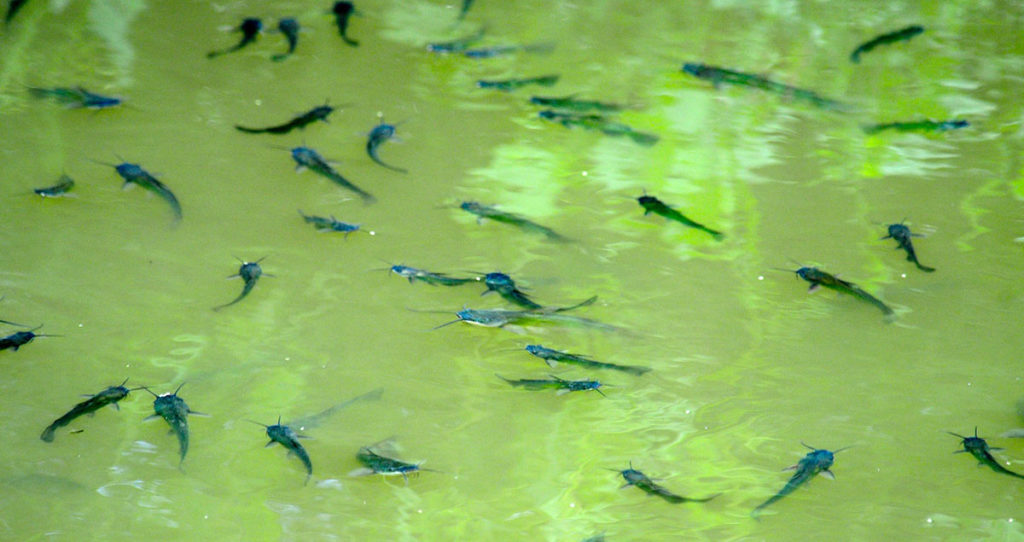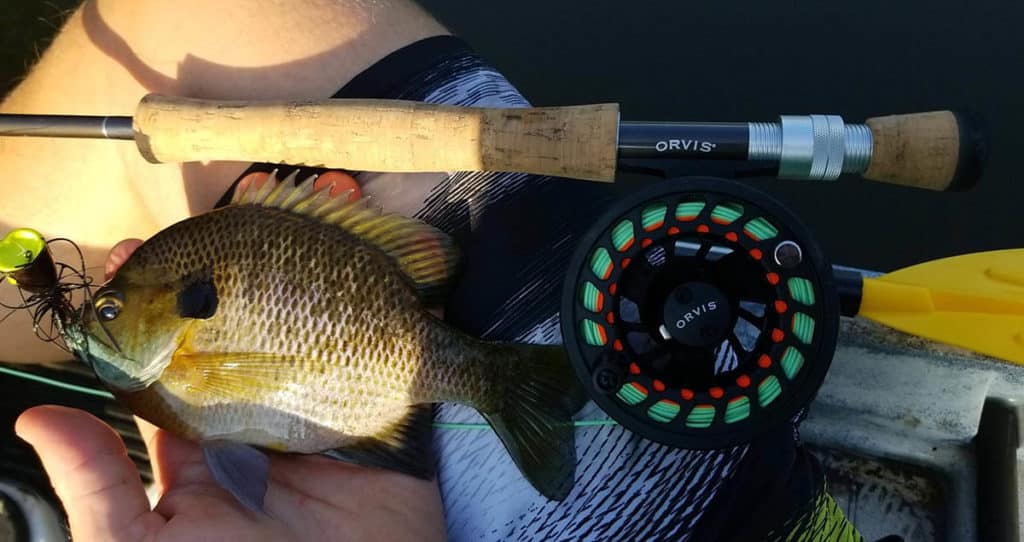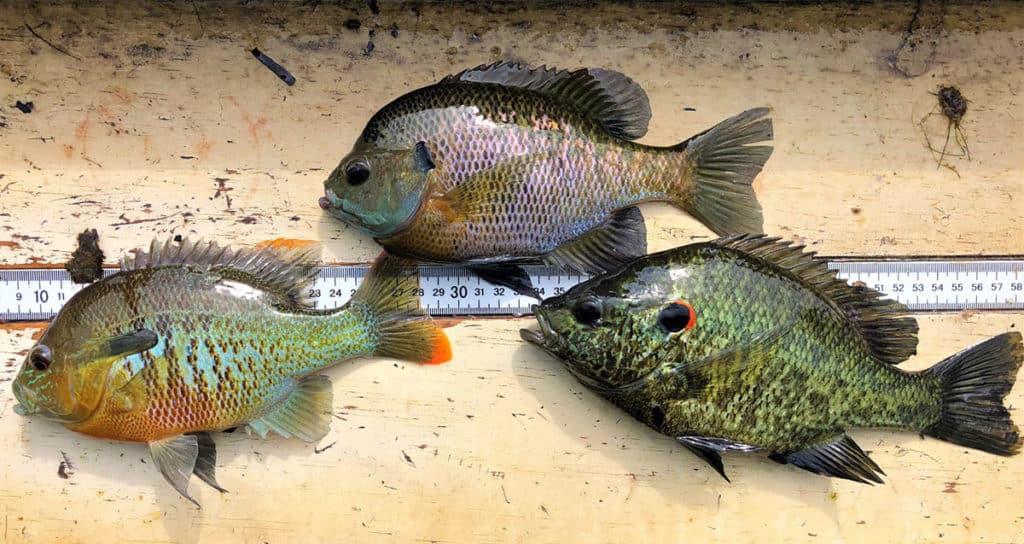Choosing the right bait color can make all the difference in your bass fishing success. In this article, we dive deep into the art of selecting the perfect bait color, exploring the factors that influence color choice and providing practical tips for anglers at all experience levels. With this knowledge in hand, you’ll be well-equipped to entice even the most finicky bass to bite.
Understanding How Bass See Color
To select the right bait color, it’s essential to understand how bass perceive colors underwater. Bass have well-developed color vision, with the ability to discern reds, greens, and blues quite effectively. However, water clarity, depth, and available light all influence how well colors are visible to bass. As a general rule, bright and bold colors are more visible in stained or murky water, while natural or translucent colors are more effective in clear water.
Color Visibility at Different Depths
As you go deeper underwater, the color spectrum shifts, and certain colors lose their vibrancy or disappear altogether. Reds and oranges fade quickly, while blues and greens remain visible at greater depths. Keep this in mind when selecting bait colors, and consider using brighter colors in shallow water and darker or more contrasting colors in deeper water.
Factors Influencing Bait Color
Water Clarity
When choosing bait colors for bass fishing, always consider the clarity of the water you’ll be fishing. Here are some recommendations for selecting colors based on water clarity:
- Stained or Muddy Water: In low-visibility conditions, opt for bright, high-contrast colors like chartreuse, white, or firetiger. These colors will stand out and help bass locate your bait more easily.
- Clear Water: In clear water, more natural, subtle colors like green pumpkin, watermelon, or shad patterns are preferred. These colors closely mimic the appearance of real prey, making it more likely that bass will strike.
Weather and Light Conditions
Weather and available light also play a crucial role in bait color selection. Here are some tips for adjusting your color choices based on these conditions:
- Bright, Sunny Days: When the sun is shining brightly, bass are more likely to see flashy, reflective colors. Try using metallic shades like silver, gold, or chrome to take advantage of the light and draw attention to your bait.
- Overcast or Cloudy Days: On overcast days, bass may have difficulty seeing more subtle colors. Opt for darker or high-contrast colors like black and blue, black and red, or Junebug to increase visibility.
Match the Hatch
“Matching the hatch” refers to selecting bait colors that closely resemble the natural prey items that bass are feeding on in a given body of water. Pay close attention to the forage in your fishing area – whether it’s shad, bluegill, crawfish, or other prey – and choose colors that mimic their appearance. Doing so will increase the odds of bass mistaking your bait for a real meal.
Tips for observing local forage: Look for signs of baitfish activity, such as birds diving, baitfish dimpling the surface, or bass busting on the surface. You can also consult local fishing reports or talk to fellow anglers to learn about the primary forage species in your fishing area. Additionally, collecting samples of the forage or observing them in shallow water can help you better understand their color patterns and behavior.
Seasonal Considerations
Bass behavior and forage availability change throughout the year, and this can impact bait color selection. Here are some general seasonal guidelines to consider when choosing bait colors:
- Spring: As water temperatures warm up, bass begin to move shallow in preparation for spawning. During this time, they may actively feed on bluegill, crawfish, and other prey species. Opt for colors like green pumpkin, watermelon, or bluegill patterns to imitate these natural forage items.
- Summer: In the summer months, bass often target shad and other baitfish. Shad-patterned colors, such as silver, white, and chrome, can be particularly effective. Additionally, try bright colors like chartreuse or firetiger in stained or muddy water.
- Fall: As water temperatures cool, bass begin to feed aggressively in preparation for winter. Focus on imitating the prevalent forage in your area, which may include shad, bluegill, or crawfish. Natural, subtle colors are often preferred during this time.
- Winter: In cold water, bass tend to be more lethargic and may not actively chase fast-moving baits. Opt for dark or high-contrast colors, like black and blue or black and red, and slow down your presentation to entice bites.

Bait Color Selection Chart
| Factors | Recommended Bait Colors |
|---|---|
| Water Clarity | |
| – Stained or Muddy Water | Chartreuse, white, firetiger, bright orange |
| – Clear Water | Green pumpkin, watermelon, shad patterns, natural or translucent colors |
| Weather and Light | |
| – Bright, Sunny Days | Metallic shades (silver, gold, chrome), flashy and reflective colors |
| – Overcast or Cloudy Days | Darker or high-contrast colors (black and blue, black and red, Junebug) |
| Depth | |
| – Shallow Water | Brighter colors (reds, oranges, chartreuse) |
| – Mid-depth Water | Colors visible at greater depths (greens, blues) |
| – Deep Water | Darker or high-contrast colors (black, blue, purple) |
| Season | |
| – Spring | Green pumpkin, watermelon, bluegill patterns |
| – Summer | Shad patterns (silver, white, chrome), chartreuse, firetiger (in stained or muddy water) |
| – Fall | Natural, subtle colors that imitate the prevalent forage (shad, bluegill, crawfish patterns) |
| – Winter | Dark or high-contrast colors (black and blue, black and red), slow down presentation |
Lure Type and Color Combinations
The type of lure you use can impact how effective a given color is in attracting bass. Here are some recommendations for pairing colors with specific lure types:
- Soft Plastic Worms: Two-tone worms can be highly effective, as the contrasting colors make them more visible and appealing to bass. Experiment with color combinations like green pumpkin/chartreuse or watermelon/red flake.
- Crankbaits: Select crankbaits with contrasting belly colors, such as a white or chartreuse belly on a shad-patterned bait. This can help improve visibility and make the lure more enticing to bass.

Experiment and Adapt
There is no one-size-fits-all approach to bait color selection. The most successful anglers are those who are willing to experiment and adapt their color choices based on the conditions and results. If you find that a particular color is not producing results, don’t hesitate to switch it up and try something new. Over time, you’ll develop a deeper understanding of which colors work best in different situations and for targeting various bass species.
Final Thoughts
Mastering the art of bait color selection for bass fishing can significantly improve your catch rates and overall enjoyment on the water. By understanding how bass see color, considering water clarity, factoring in weather and light conditions, matching the hatch, taking into account seasonal changes, and experimenting with different colors, you’ll be well on your way to becoming a more skilled and versatile bass angler. So, the next time you hit the water, keep these tips in mind and watch as your success with bass fishing reaches new heights.








Very insightful reading. Thanks for sharing your experiences.
Quite ready to implement these helpful findings.
you did not write more than you had to say. concise and thorough.